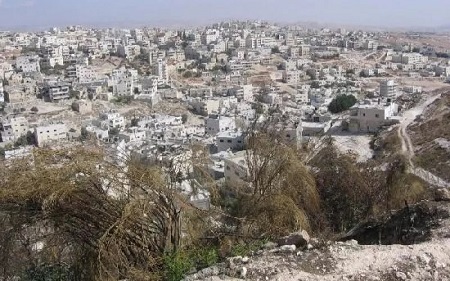Landless in the Middle East/North Africa

Persons and groups rendered landless is a global phenomenon afflicting millions. Those who are considered landlessness have harrowing stories to tell. However, during the COVID-19 pandemic, land-based communities and indigenous peoples have expressed how the return to their land is essential to their sustenance as a matter of survival.
Both the International Covenant on Economic, Social and Cultural Rights (ICESCR) [AR] and International Covenant on Civil and Political Rights (ICCPR) [AR] guarantee that “In no case may a people be deprived of its own means of subsistence.” The global Agenda 2030’s [AR] Sustainable Development Goal (SDG) No. 1 commits all states to “End poverty in all its forms everywhere,” and, more specifically, Target 1.4 calls for all states to “ensure that all men and women, in particular the poor and the vulnerable, have equal rights to economic resources, as well as access to basic services, ownership and control over land and other forms of property…”
In the Middle East/North Africa, landlessness is a centuries-old reality. However, landlessness in this region receives little public attention, while it is a matter of urgency for increasing millions. This region uniquely faces the full impact of climate change effects at once: water stress and drought risks, coinciding with reduced crop yields. Added to this exceptionally rampant and spatially inquitable urbanization [AR], both informal and planned.
In this dire context, human-made conditions already cause the greater part of landlessness in MENA. Past, present and future uprisings in our region exemplify symptomatic reactions to a long-standing system of taxing individual citizens, in particular workers and the one who feed us, while privatizing public assets in symbiosis with global financial interests. Notably also, the dependence upon global food chains and imported diets have eroded the region’s food sovereignty and likewise devalued its food heritage.
Old land monopolies have re-emerged in the hands of corporations, foreign or domestic, or is co-managed with old landlords, affectively reversing achievements of past land reforms. Globally, agrarian reform with land distribution was pronounced “dead” in the 1970s, only to be revived on the international agenda in 1996 through the demands of peasant movements around the world. However, even that hopeful development did not affect the region, where farmers, peasants and pastoralists continue to be denied their human rights to freedom of expression, association, collective bargaining and participation in public life by those corporations allied with our national executives, legislatures, judiciaries, armed forces and private sectors.
In 2006, nine states from the MENA region joined 87 others in recognized the “importance of establishing appropriate land reform to secure access to land” in the 2006 Declaration [AR] of the International Conference on Agrarian Reform and Rural Development, what was actually implemented was an IMF-WB-funded “market-assisted land reform,” involving either the sell-off agricultural lands to the highest bidder, or forcing peasants to pay for the land they till at prohibitive “market prices.”
However, in the realm of global commitments, each of the region’s states (except Israel) voted in favor of the UN Declaration [AR] on the Rights of Peasants and Other People Working in Rural Areas, adopted in 2018.
Conflicts, occupations and wars have only added to the structural factors shared across our region to strip the people—especially land-dependent people—from their rightful permanent sovereignty over their land and natural resources. Policy-reform programs that redistribute rural and urban land to those in need toward a modicum of social justice have been taken off all official agenda. Even the Sustainable Development Goals and related commitments until 2030 lack the targets and progress indicators that are indispensable to remedy landlessness, despite the rhetorical acknowledgement of insecure land tenure as a principal cause of the poverty to be ended in the next decade.
After establishing the root causes of multidimensional poverty in the Arab region, ESCWA has informed [AR] that 70% of the region’s poverty remains concentrated in rural areas. At the same time, most countries lack responsible land governance and the global best practices and remedial policy commitments such as the Committee on World Food Security’s Tenure Guidelines [AR] and Framework for Action in Protracted Crises [AR] remain unheeded and largely unknown across governments and relevant institutions in our region.
The progressive and cyclical crises shared with the rest of the world are disproportionately felt in the Near East and North Africa. However, at this juncture, the region’s civil society naturally converges with counterparts worldwide to call for a corrective approach to the landless people in our region as a high priority and need to realize the highest principles of our societies’ moral foundations, while operationalizing the national means of production and pursuing the sustainable development with food sovereignty that everyone deserves.
The pages of Land Times are dedicated to channeling those remedial messages, where readers will find more detail on the communities and experiences of landlessness in future issues.
Photo: The West Bank Palestinian village of al-Isawiyah used to be a prosperous agricultural community rendered landless by serial Israeli dispossessions. Source: Land Research Center.
|